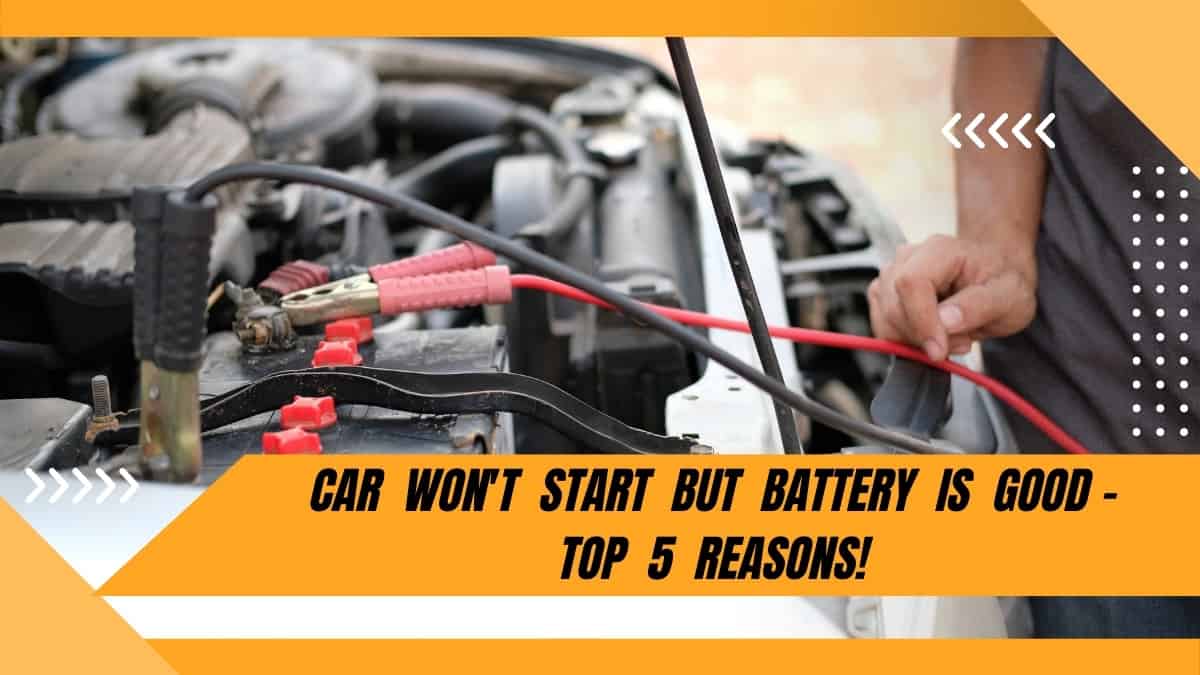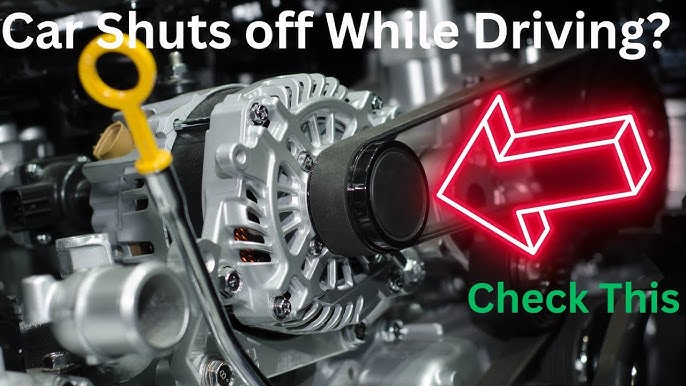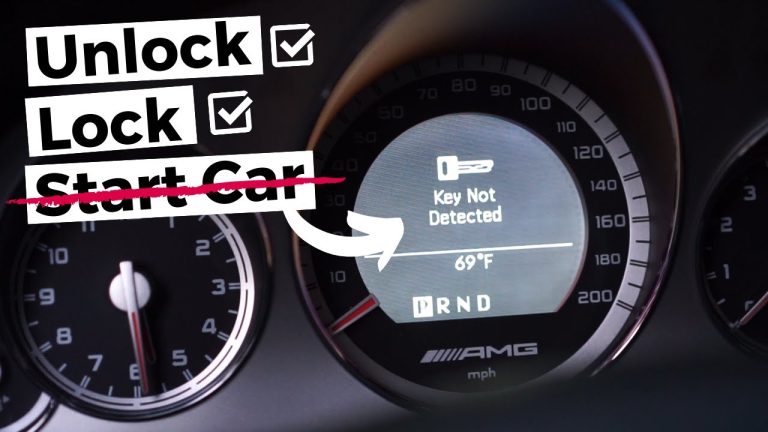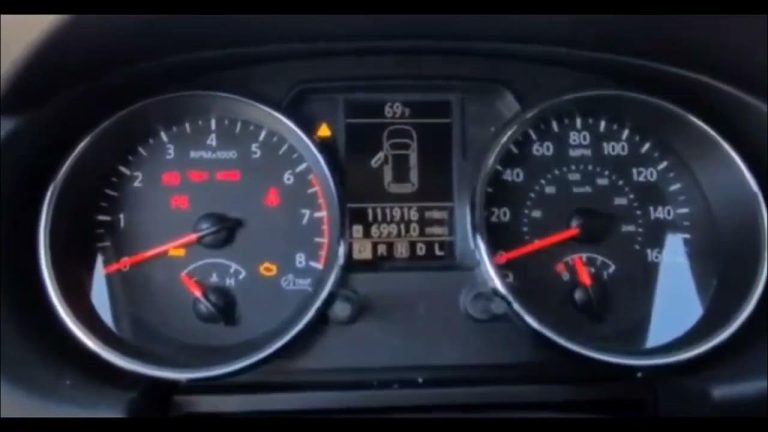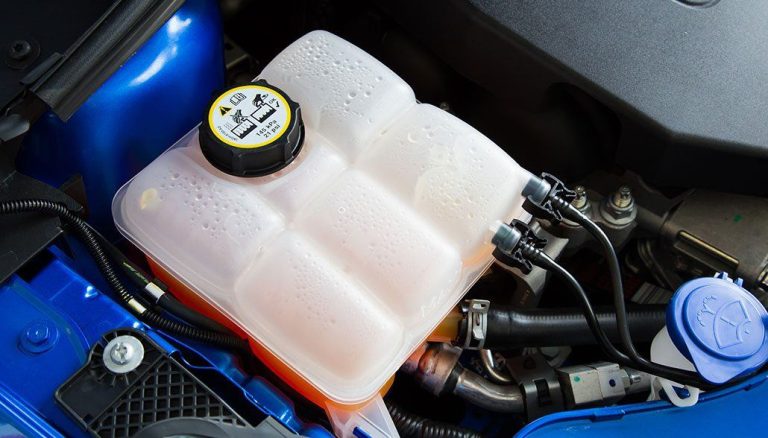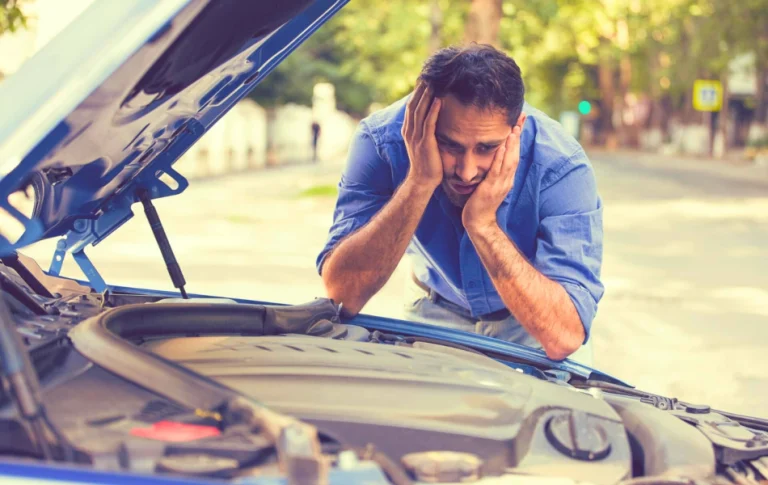Car Not Starting But Battery is Fine: Troubleshoot Now
If your car won’t start but the battery is fine, possible causes include a faulty starter motor, bad ignition switch, clogged fuel filter, empty fuel tank, or a problem with the immobilizer system. Check for dashboard warning lights, listen for clicking sounds, and inspect fuses or relays for faults.
Panic sets in. You know the battery is fine, yet your car stubbornly refuses to start. Sound familiar? You’re not alone. Many drivers face this frustrating situation. But fear not, there are other culprits behind this automotive mystery. Understanding these hidden issues can save you time, money, and stress.
Imagine confidently diagnosing the problem and getting back on the road without unnecessary hassle. Intrigued? Keep reading to uncover the secrets of why your car might not be starting even when the battery is perfectly healthy.

Credit: www.familyhandyman.com
Car Not Starting But Battery is Fine
Common Ignition Issues
| Possible Cause | Symptoms | Possible Solution |
|---|---|---|
| Faulty Starter Motor | Clicking sound when turning key | Replace or repair the starter motor |
| Bad Ignition Switch | No response when turning key | Test and replace the ignition switch |
| Clogged Fuel Filter | Engine cranks but won’t start | Replace the fuel filter |
| Empty Fuel Tank | Fuel gauge shows empty or low | Refuel the car |
| Faulty Fuel Pump | No fuel reaching engine | Check and replace the fuel pump |
| Blown Fuse or Relay | Electrical components not working | Inspect and replace faulty fuses/relays |
| Immobilizer Issue | Security light flashing | Reset or reprogram immobilizer system |
| Bad Spark Plugs | Engine cranks but no ignition | Inspect and replace spark plugs |
Read more: Hooked Battery Up Backwards Now Car Won’t Start: Fix Tips
Faulty Ignition Switch
A faulty ignition switch could be at the heart of your car’s refusal to start. This component is responsible for sending power from the battery to the engine.
Have you ever noticed the dashboard lights flickering or the car stalling while driving? These are telltale signs of a worn-out ignition switch. Consider testing the switch or consulting a mechanic to ensure it’s in good working order.
Worn Out Spark Plugs
Spark plugs are small but mighty. They ignite the fuel in your engine, and if they’re worn out, your car won’t start.
Check them for any signs of wear, such as a gap in the electrodes or black soot. Replacing them is a simple task that can restore your car’s functionality and improve fuel efficiency.
Malfunctioning Starter Motor
The starter motor is crucial for getting your engine up and running. If it malfunctions, your engine won’t start, no matter how charged the battery is.
Listen for a clicking sound when you turn the key. This could indicate a problem with the starter motor. Don’t hesitate to consult a professional if you suspect this issue, as it could prevent your car from starting altogether.
Broken Ignition Coil
The ignition coil transforms the battery’s voltage into a spark powerful enough to ignite the engine. A broken coil means no spark, and thus, no start.
Symptoms include misfiring or a rough idle. Inspect the coil for any visible damage or wear and replace if necessary to keep your car running smoothly.
Loose Or Corroded Wiring
Wiring issues can often go unnoticed but have a big impact on your car’s ignition system. Loose or corroded wires may interrupt the electrical flow needed to start your car.
Examine the wiring for any loose connections or signs of corrosion. Securing or cleaning these can often solve starting problems without the need for expensive repairs.
Security System Malfunction
Modern cars come equipped with security systems that can sometimes malfunction, preventing the car from starting.
If your car’s security light is flashing, it might be an issue with the immobilizer or key fob. Check your car manual for troubleshooting tips or consult a professional if needed.
Have you ever thought about how often these issues could be avoided with a little preventative maintenance? Regular checks and timely replacements can ensure your ignition system remains reliable. Next time your car refuses to start, remember these common ignition issues. They might just point you in the right direction.
Fuel System Problems
Car not starting despite a fine battery often indicates fuel system issues. The fuel system supplies the engine with fuel for combustion. When this system fails, the engine does not get the fuel it needs. Understanding these problems can help in diagnosing the issue.
Fuel Pump Malfunction
The fuel pump moves fuel from the tank to the engine. If it breaks, the engine won’t receive fuel. Listen for a humming sound from the tank when you turn the key. No sound might mean the pump is faulty.
Clogged Fuel Filter
The fuel filter cleans fuel before it reaches the engine. Over time, it can become clogged. A clogged filter restricts fuel flow. This can prevent the car from starting. Regular replacement can avoid this issue.
Fuel Injector Problems
Fuel injectors spray fuel into the engine’s cylinders. They must work well for proper engine function. Dirty or blocked injectors can disrupt fuel delivery. This can lead to starting troubles.
Empty Fuel Tank
It seems obvious, but sometimes the tank is simply empty. Check the fuel gauge to ensure there is enough fuel. A faulty gauge can also mislead you.
Vapor Lock
Vapor lock occurs when fuel vaporizes in the fuel lines. It blocks fuel flow, especially on hot days. Allow the engine to cool down before trying again.
Starter Motor Failures
A vehicle might not start even with a good battery due to starter motor problems. This issue can cause a clicking sound or no response when turning the key. Regular maintenance and checks can prevent such failures, ensuring your car starts smoothly.
When your car refuses to start despite having a healthy battery, the culprit might be the starter motor. This essential component is responsible for turning the engine over and getting your car running. If it fails, it leaves you stranded and frustrated. Understanding how starter motor failures occur can save you time and money. Let’s dive into the common issues and solutions related to starter motor failures.
Common Symptoms Of Starter Motor Failure
You might notice a clicking sound when you turn the key. This sound often indicates that the starter motor is trying to engage but can’t.
Another sign is the absence of any noise when you turn the ignition. This silence means the starter motor isn’t receiving power or has completely failed.
Visible damage, like a burnt smell or smoke, can also suggest starter motor issues. It’s essential to act quickly if you notice these signs to prevent further damage.
Why Starter Motors Fail
Starter motors can fail due to wear and tear. Over time, the internal components degrade, leading to malfunction.
Electrical issues, such as faulty wiring or a blown fuse, can prevent the starter motor from receiving the necessary power.
Sometimes, external factors like oil leaks can damage the starter motor. If oil seeps into the motor, it can cause corrosion and eventually lead to failure.
Diagnosing Starter Motor Problems
Start by checking the connections. Loose or corroded connections can prevent the starter motor from functioning properly.
Use a multimeter to test the voltage at the starter motor. This will tell you if it’s receiving power.
Consider seeking professional help if you’re unsure. A mechanic can quickly identify the issue and suggest the best course of action.
Fixing Starter Motor Failures
Replacing a starter motor can be a straightforward task if you have the right tools and knowledge. Make sure to disconnect the battery before starting.
Cleaning or tightening connections might solve the problem if the starter motor is still in good condition.
If the starter motor is beyond repair, buying a new one might be the best option. Look for reputable brands and ensure compatibility with your car model.
Preventing Future Starter Motor Issues
Regular maintenance can prolong the life of your starter motor. Check connections and clean them periodically.
Address any oil leaks promptly to prevent damage to the starter motor. This simple step can save you from costly repairs.
Think about your driving habits. Short, frequent trips can wear down your starter motor faster than longer journeys.
Are you ignoring the signs of a failing starter motor? Taking action now can save you from being stranded later.

Credit: www.autotechiq.com
Faulty Alternator Symptoms
Encountering a car that won’t start despite a fine battery can be frustrating. One common culprit is a faulty alternator. The alternator powers electrical systems and charges the battery while driving. Recognizing faulty alternator symptoms can save you time and money.
Low Battery Light
A low battery light on your dashboard can indicate alternator problems. This warning light often resembles a battery icon. It’s a sign that the alternator isn’t charging the battery properly. Ignoring this signal can lead to a dead battery.
Dim Or Flickering Lights
Dim headlights or flickering interior lights suggest alternator trouble. The alternator supplies power to these electrical components. If it fails, power delivery becomes inconsistent. This can cause lights to dim or flicker unexpectedly.
Strange Noises
Odd sounds from your engine could mean alternator issues. A failing alternator might produce grinding or whining noises. These sounds come from worn bearings or a slipping belt. Addressing these noises early can prevent further damage.
Electrical Malfunctions
Malfunctioning electronics signal possible alternator failure. Power windows, dashboard instruments, and car radios may act erratically. This happens due to insufficient power supply from the alternator.
Frequent Engine Stalls
An engine that stalls frequently may indicate alternator problems. The alternator powers the ignition system. Without proper power, the engine can stall unexpectedly. Frequent stalling requires immediate attention.
Checking The Spark Plugs
When your car refuses to start despite a healthy battery, you might find yourself scratching your head in frustration. One often overlooked component in this scenario is the spark plugs. They play a crucial role in igniting the air-fuel mixture within your engine. Ensuring they are in good condition can save you a lot of headaches and potentially costly repairs.
Checking The Spark Plugs: A Simple Overview
Have you ever wondered why your car seems sluggish or doesn’t start at all? It could be your spark plugs. These tiny components are vital for starting your car. Checking them is easier than you might think.
Start by locating the spark plugs. They’re usually nestled under the hood, near the engine block. You might need a wrench to remove them.
Signs Of Faulty Spark Plugs
Inspect the spark plugs for any visible damage. Are they covered in soot or oil? This could indicate a problem. Spark plugs should appear clean and have a light brown color.
A worn-out spark plug might have a larger gap or be covered in carbon deposits. This can lead to misfires. If your car stutters or struggles to start, it’s time to check them.
How To Replace Spark Plugs
Replacing spark plugs is straightforward. Remove the old plug using a socket wrench. Carefully insert the new spark plug, ensuring it’s properly aligned.
Tighten it until snug but avoid overtightening. Replacing them can improve performance and fuel efficiency. Ever noticed how smoothly your car runs after a tune-up? That’s often thanks to fresh spark plugs.
Why Spark Plugs Matter
Think about your morning coffee routine. Just like the caffeine kick-starts your day, spark plugs ignite your engine. Without them, your car won’t start.
They ensure a smooth combustion process, helping your car run efficiently. Neglecting them can lead to poor fuel economy and engine problems.
Should You Consult A Professional?
If you’re unsure about checking or replacing spark plugs, consider seeking professional help. Auto mechanics can quickly diagnose spark plug issues.
They often have tools for testing spark plug performance. This can save you time and ensure your car is running optimally.
Have you ever wondered if a professional could spot issues you might miss? Sometimes, expert eyes can catch subtle problems early.
So, next time your car fails to start, think spark plugs. A simple check might reveal the solution. Keep your spark plugs in good condition, and you might avoid unexpected car troubles.
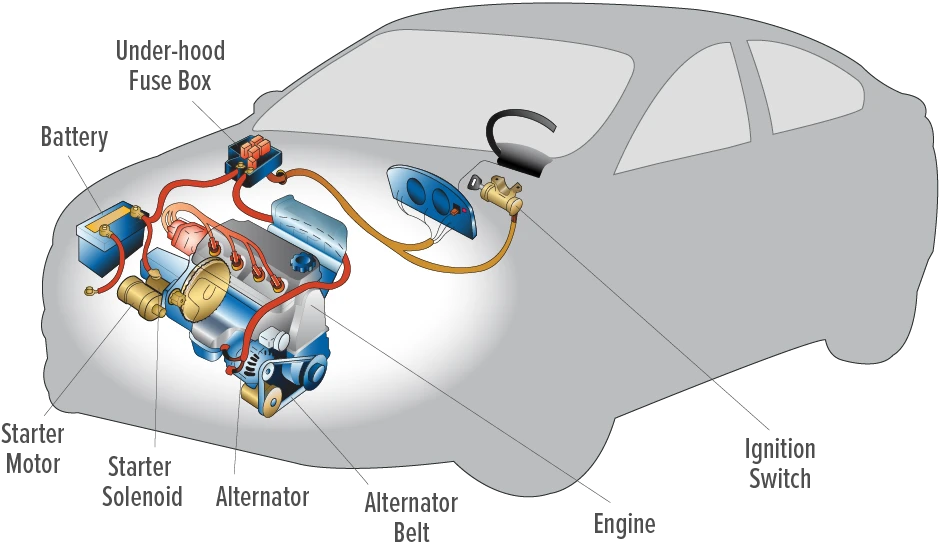
Credit: www.lesschwab.com
Frequently Asked Questions
Why Is My Car Not Starting But Has A Battery?
Your car might not start due to a faulty starter, ignition switch, or fuel system issue. Check connections and fuses. Ensure the battery terminals are clean. Consult a mechanic if problems persist. Regular maintenance can prevent such issues.
What Do I Do If My Car Won’t Start But Everything Else Works?
Check the battery connections for tightness and corrosion. Inspect the starter motor and ignition switch. Ensure the gear is in park or neutral. Try jump-starting the car with jumper cables. Contact a mechanic if the problem persists.
How Do I Know If It’s My Battery Or My Starter?
Check the battery for power using a multimeter. Listen for a clicking sound when starting. A weak battery may dim lights. A faulty starter might cause grinding or clicking without engine turnover. Inspect connections for corrosion. Consult a mechanic for accurate diagnosis.
Can A Car Battery Be So Dead It Won’t Jump Start?
Yes, a car battery can be too dead to jump start. Severe sulfation or damage may prevent charging. Replace the battery if jump starting fails repeatedly. Regular maintenance can prevent battery issues. Ensure connections are clean and secure for effective jumping.
Consider professional help if problems persist.
Why Won’t My Car Start If The Battery Is Fine?
Your car might have a faulty starter, ignition switch, or fuel system. Checking these areas can help diagnose the issue.
Read more: Hooked Battery Up Backwards Now Car Won’t Start: Fix Tips
Conclusion
Car Not Starting But Battery is Fine, look elsewhere. Check the starter, ignition switch, or fuel system. Sometimes, it’s a simple fix. A loose wire or corroded connection might be the culprit. Regular maintenance prevents many issues.
Keep your car in top shape. Don’t ignore warning signs. Early detection saves time and money. Consult a mechanic when in doubt. They can diagnose problems quickly. Remember, a well-maintained car ensures safe driving. Stay informed. Keep learning about car care.
Your vehicle will thank you.

